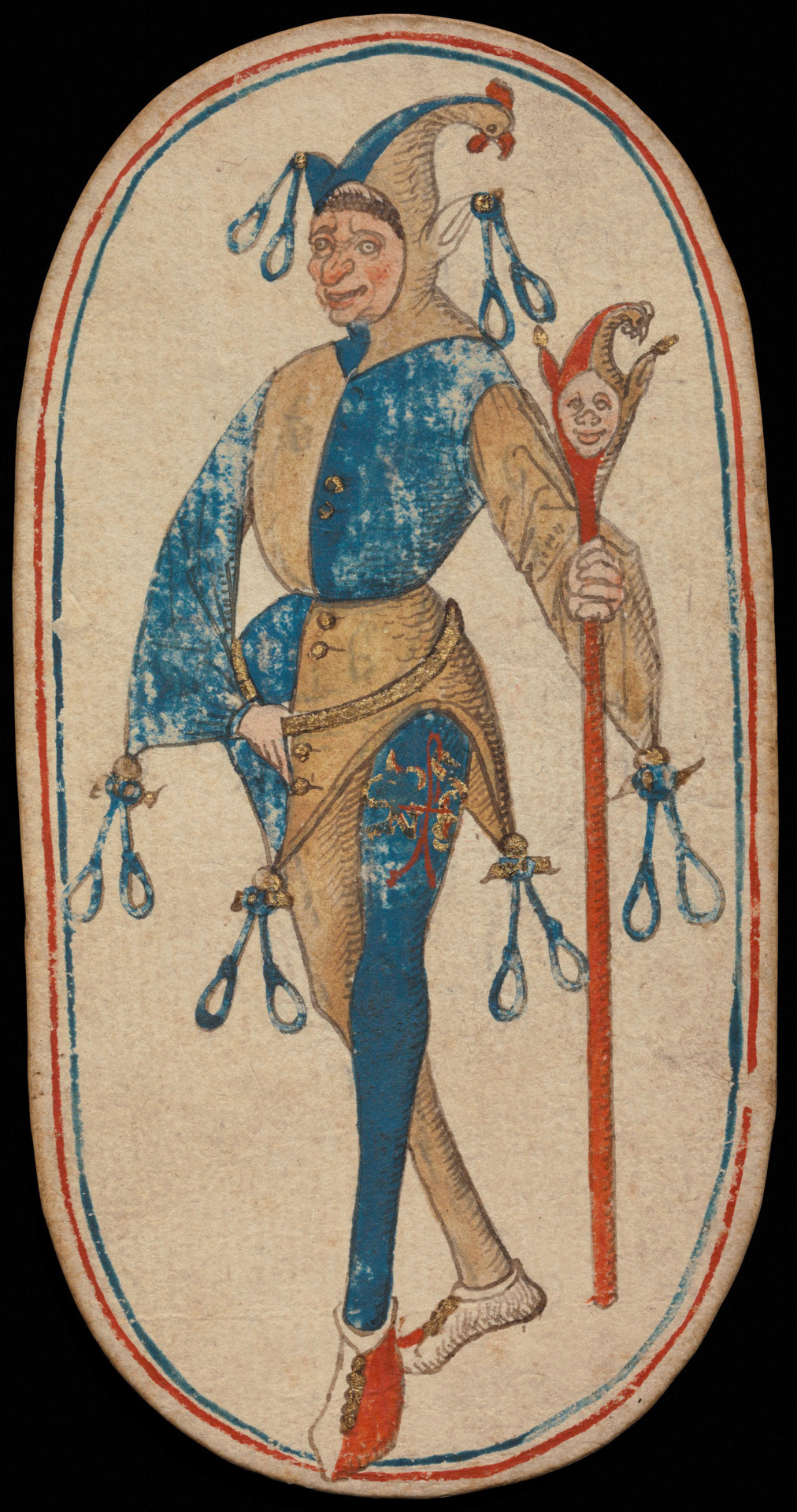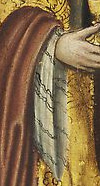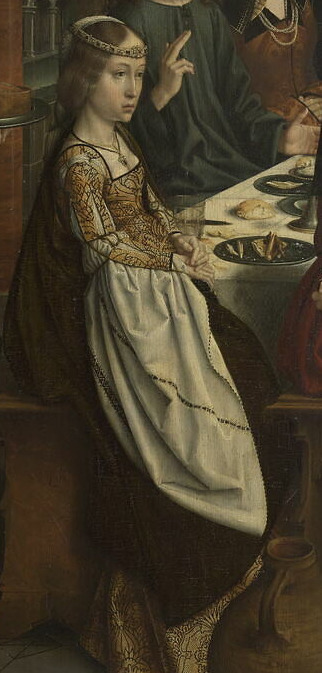#netherlandish fashion
Explore tagged Tumblr posts
Text
Interesting illumination from Mechelen Choirbook

I am afraid i disagree with the identification of the people within the illumination, they were so close, but not everything fits.
Stop the video at 4:20-there is close up of the illumination.
youtube
The girls at front are probably truly sisters of Charles V raised in Habsburg Netherlands.
But why is Mary dressed so differently than her sister? We had scenario once. With their c.1507 set of 3 portraits-where she was the toddler. She doesn't seems to be in this picture, because her size is wrong. But wouldn't theory of Ferdinand also work with him not being up to scale? He was just 3 years younger than Charles-he shouldnt be so small.
I think the illumination originates sometime in c.1505-1507-when Philip was alive. Imo he is the main man, with coat of arms of duke of burgundy, the boy is Charles, and the adult woman is either Margaret of Austria or Joanna of Castile.
Juding by roundish neckline, Joanna is more likely because that is close to one of spanish styles.

Although roundish necklines although bit wider(downward curve) were also once part of N-W fashion, it was back in early 1480s. Worn by Mary of Burgundy-on right in golden dress:

But back to the main illumination. One of the girls has that roundish neckline(more to spanish style) as well:

Which means I missed another possibility with these two portraits:

-I stand behind this possibly not depicting Philip and Margaret and the girl possibly wearing spanish fashion.
But if Joanna's daughters during their childhood sometimes wore it, then it can be one of those girls raised in Netherlands.
And thus the boy could be Charles.
And i might simply not have that good grasp on style of Master of Legend of Magdalene.
7 notes
·
View notes
Text

Pendant with the Coronation of the Virgin, elephant ivory behind rock crystal, North French or Netherlandish, early 15th Century
From the Met Museum
#pendant#jewellery#fashion#fashion history#north french#french#netherlandish#early 15th century#15th century#1400s#medieval#ivory#rock crystal#gold
612 notes
·
View notes
Text

Portrait of a Gentleman by Jan Gossaert, 1530.
#classic art#painting#jan gossaert#mabuse#netherlandish artist#16th century#portrait#male portrait#green background#fashion
101 notes
·
View notes
Text
A portrait of Henry VIII by Netherlandish artist Meynnart Wewyck has recently proven to contain a ‘hidden gem’ unveiled by researchers at the National Portrait Gallery and Hamilton Kerr Institute. Scans of this incredible vignette reveal that the portrait was concealing an earlier likeness of the Tudor King, when he was ‘clean-shaven and slimmer.’ Researchers were able to recognise the youthful image of King Henry VIII thanks to his long, distinctive nose and lavish attire. “This is an exciting discovery. Two images for the price of one.” In the original image, completed in 1519, Henry was at the height of his power and an incredible athlete, only 28 years-old. However, a jousting injury in 1536 greatly reduced Henry’s mobility and resulted in drastic weight gain for this Tudor monarch. It is thought that a court artist updated the image to reflect the King’s changing appearance. The updated portrait also included a beard, which Henry began to sport in preparation of the Field of the Cloth of Gold in 1520 and maintained for the remainder of his life. “What is fascinating is that, as the king aged - and, more importantly, as he adopted new fashions - the person who owned this portrait started getting very worried that what he had on his wall didn’t look anything like the king.”
Source: TudorExtra
#henry viii#the tudors#art history#anne boleyn#henry tudor#tudor dynasty#catherine of aragon#renaissance#medieval#history news
26 notes
·
View notes
Text
Oh! I saw these in person!
Here is the text from the gallery label:
The Cloisters Playing Cards
Tempera, ink, and metal foil on pasteboard
South Netherlandish, Burgundian territories, ca. 1475-80
The Cloisters Collection, 1983 (1983.515.1-.52)
The Cloisters set of fifty-two cards constitutes the only known complete deck of illuminated ordinary playing cards (as opposed to tarot cards) from the fifteenth century. There are four suits, each consisting of a king, queen, knave, and ten pip cards. The suit symbols, based on equipment associated with the hunt, are hunting horns, dog collars, hound tethers, and game nooses. The value of the pip cards is indicated by appropriate repetitions of the suit symbol. The figures, which appear to be based on Franco-Flemish models, were drawn in a bold, free, and engaging, if somewhat unrefined, hand. Their exaggerated and sometimes anachronistic costumes suggest a lampoon of extravagant Burgundian court fashions. Although some period card games are named, it is not known how they were played.
Almost all card games did, however, involve some form of gambling. The condition of the set indicates that the cards were hardly used, if at all. It is possible that they were conceived as a collector's curiosity rather than a deck for play.

















ab. 1475-1480 The Cloisters Playing Cards by South Netherlandish master
King of Horns / Queen of Horns / Knave of Horns
King of Nooses / Queen of Nooses / Knave of Nooses
King of Collars / Queen of Collars / Knave of Collars
King of Tethers / Queen of Tethers / Knave of Tethers
(Metropolitan Museum of Art)
6K notes
·
View notes
Text

Three's a Crowd . 18 November 2024 . Dormition of the Virgin . Hans Holbein the Elder (1524)
Artist: Hans Holbein the Elder (1524) Title: Dormition of the Virgin Object type: Painting Genre: Religious art Description: Death of the Virgin Mary Date: 1491 until 1492 Medium: Oil on oak wood Dimensions: height: 1,500 mm (59.05 in); width: 2,285 mm (89.96 in) Collection: Museum of Fine Arts, Budapest Object history: 1911 given by Ferenc Kleinberger, Paris
Signed on the censer: HANS. HOLPAIN.
At the turn of the sixteenth century Hans Holbein the Elder, famous painter of altarpieces and portraits, was the leading painter of the rich merchant city of Augsburg. The painting in Budapest is one of his finest works and, indeed, one of the most significant works of German painting at that time. The inscription tells us that it was commissioned by Wolfgang Preu, Canon of Rottenbuch between 1490 and 1500 and that it originally decorated the tomb of the Preu family in the Church of St James at Straubing.
The death of the Virgin is placed in a contemporary domestic setting. Mary, represented as a middle-class woman of Augsburg and wearing the clothes of the period, is seen lying on her canopied bed with the Apostles grouped about her like her family - one of them, wearing spectacles, is reading from the Bible. The artist follows the medieval tradition of simultaneous narration by depicting the sequel in the same picture: at the top we see the Virgin's soul, in the form of an innocent young girl in white, ascending to heaven to be received by God the Father.
The Virgin Mary is seen surrounded by the apostles assembled, according to the Legenda Aurea, by divine miracle from various remote parts of the world for this solemn occasion. Though they cannot have met for a long time, they do not speak to one another; incontestably the Virgin remains the centre of the scene. Every activity, every gesture of pain is directed towards her. She is seated in their midst, fragile and graceful, with a dreamy face - of all the faces in the picture hers shows the finest painting - and a halo around her head representing the supernatural element which is, however, hidden by a bonnet, a concession to wordly fashion. The picture is, indeed, marked by a mixture of accentuated verisimilar and supernatural elements. The young apostle-sitting before the bed, absorbed in reading and taking no part in the social gathering - who wears a kind of pince-nez in accordance with the customs of those days, is a veritable genre figure. The books lying on the bed, the censers and aspersorium painted with equally meticulous precision became ubiquitous pieces of the still-lifes of subsequent ages.
In this painting Holbein, with exquisite taste and force, blends the traditional, late Gothic approach with a new style of representing nature and reality adopted from Netherlandish painting.
0 notes
Photo

Detail from St. Catherine of Bologna, Master of the Baroncelli Portraits. 1510
#medieval#gothic#bruges#belgium#art#art history#middle ages#renaissance#painting#museum#Flemish#baroncelli#Master of the Baroncelli Portraits#netherlandish#netherlandish painting#netherlandish art#tudour#fashion#dress#princess#royal#queen#consort
24 notes
·
View notes
Video
Triumph Gloria Very Fast - Elegant - The Wagen with Sex Appeal by carlylehold

Blanco y Negro, Face Powder Trini, 1927. Illustration possibly by Federico Ribas.
15 notes
·
View notes
Text

Hans von Aachen's allegorical paintings, with their often complicated encoding, carried an intellectual stamp, powerfully influenced by the personality of the Emperor and by his high level of culture. After Rudolf II's death, von Aachen continued to paint in a similar fashion, though the colouring became darker in his late works, as if he were trying to convey the slow decline of Rudolfine art.
During the reign of Emperor Matthias he painted David and Bathsheba, a tribute to the ideal of female beauty of Prague Mannerism; here again the naked female body is at the centre of the narrative. The boundary between mythological and religious painting is blurred in favour of extremely sensual eroticism. The objects surrounding Bathsheba, arranged in a still-life manner, are reminiscent of Netherlandish models, to which Hans von Aachen was also indebted in his few genre paintings.
David and Bathsheba, 1612-15 by Hans von Aachen. Oil on canvas, 128 x 105 cm.
🏛: Kunsthistorisches Museum, Vienna
•
•
#historyofart #arthistory #bathsheba #kunsthistorischesmuseum #kunsthistorischesmuseumwien #vienna #europe #europeanart #ancientart #17thcentury #17thcenturyart #baroque #barocco #baroqueofficial #baroquestyle #baroccostyle #roccobarocco #artgallery #artlovers
2 notes
·
View notes
Photo

@realcatalina I don’t agree on ruling out Henry VII and Elizabeth of York based on fashion alone. As we can see in the tapestry at St Mary’s Guildhall (depicting Henry VI and Margaret of Anjou) and in the marriage/betrothal tapestries of Prince Arthur and Catherine of Aragon, they are all depicted in the Netherlandish fashion. Although most likely none of those people ever dressed completely in that type of fashion, those artpieces were nevertheless produced in Flanders and they depict them according to their own cultural ideas. It might simply be that the Haddon Hall depictions were commissioned overseas.
Moreover, the owner of Haddon Hall, Sir Henry Vernon, was Prince Arthur’s governor and treasurer, and Arthur stayed there in 1501. So there’s clearly a connection between Haddon Hall’s owner and the royal family at the start of the 16th century.
#replies#of course it might not be them#(it might be sir henry vernon and his wife)#but i wouldn't rule it out based on fashion
2 notes
·
View notes
Text
St. Barbara by Lucas Cranach the Elder
Lucas Cranach the Elder is not among painters we associate with Netherlandish art. However, he made the trip in 1509, and painted Emperor Maxmilian and future Charles V during the occasion.

While we have no prove he painted also netherlandish royal ladies, it is clear they inspired the St. Barbara(above) which he painted around same time. C.1509-it is excellent example of netherlandish fashion from that time...and very suitable as costume inspiration. Except the halo of course. :-)
It's quite rare we can tie painting to specific year, but that makes it even more valuable in terms of creating chronology of fashion for specific country. And I am very gleeful that this fits to my chronology- late 1500s/very early 1510s.
The saint Barbara in this golden outfit is left wing of portable artalpierce(triptych) belonging to Landgrave Wilhel of Hesse an Anna of Mecklenburg.
Which is also called-Jesus flanked with Saints Barbara,left and Catherine,right,1509 Lucas Cranach:

If you want to see the painting in more detail, here is the link:
PS: I forgot to say that this stripy embroidery is reminisense of spanish embroidery(examples more bellow)

(Update-i have no idea why this image shows so large. The picture i put in is no larger than my thumb. It's probably some glitch. Sorry.)
and thus probably brought into Netherlands by Joanna I of Castile or Margaret of Austria's time in Spain as Princess of Austurias(both happening in late 1490s). I don't recall another example of this, in netherlandish fashion, so far.


But I'd expect that at court it could have lingered for bit, especially among royals women. Margaret and Joanna's daughters.
8 notes
·
View notes
Note
I've got a question, what was the inspiration behind the George of Clarence's outer robe in the artwork you posted of him; because I swear I've seen those before and I'm currently searching through manuscripts to see if I have. I love the designs you've made, they look amazing :D
Hi! :)
First of all, I want to thank you for this question and for the beautiful words!
In terms of design, well, I have to specify that not all the clothing items I draw are taken over and drawn directly, but rather, sometimes I like to take more parts from several clothing items found in the miniatures of the manuscripts or various illustrations, with the help of which I end up making a combination. The clothes I am inspired by can, of course, be the fashion of other centuries, such as the 13th or 14th century.
To answer more concretely, I will leave below some of the images and the type of robe I was inspired by for George de Clarence's outer robe.
I also apologize if I may be mistaken for the name or source of of an image.
For the upper part of the robe, more precisely its decorative part, I used the following images:
1. These two images (I'm not very sure of the first one, but okay) are related to "Liber de moribus hominum et officiis nobilium super ludo scacchorum" ('Book of the customs of men and the duties of nobles or the Book of Chess'), the written book of Jacobus of Cessolis.


The rest of the images played an important role in the construction of the entire robe.
2. "The Falcon's Bath" tapestry, ca. 1400–1415, South Netherlandish


3. Detail from a page in the manuscript "Très Riches Heures"

4. "Lover telling of love to lady", Christine de Pisan, mid. 15th century. From Cent ballades d'amant.

5. Kendall Redburn, "Costumes of all nations", plate 49-54

6. I'm sorry, I completely forgot where I got this image from and I cannot find out its name and what manuscript it belongs to.
UPDATE!! This is from “La Fleur des histoires”, Jean Mansel, fol 204r.

7. Ms. fr. 64, fol. 47v, "La fleur des histoires" by Jean Mansel, Bibliothèque de Genève. Flemish (1450-1480)

8. "Saint Bartholomew before Emperor", c. 1450-1480, Anonymous Aragonese, Museo de Bellas Artes, Bilbao, Bizkaia, Basque Country, Spain

It's the first time I've answered such a question, so I hope I've been helpful! I'm a little nervous! Haha.
15 notes
·
View notes
Text

A Young Princess, Possibly Dorothea of Denmark by Jan Gossaert, circa 1530.
#classic art#painting#jan gossaert#mabuse#netherlandish artist#16th century#portrait#child portrait#green background#princess#fashion
31 notes
·
View notes
Text
“…Catherine Parr had served in Mary’s household years before and the two were already friends before the latter became queen, on 12 July 1543. When she did, Catherine seems to have enjoyed ordering in the best foreign fashions and looking at them with Mary. They also seemed to share cultural and religious tastes. Catherine profited from Mary’s high level of education.
There is an understandable but misleading tendency to project back on to the religious and spiritual life of the 1540s the confessional or denominational differences which would crystallize later in the century. In particular, it sometimes seems to be assumed that personal devotion to Christ as Savior was unique to those with evangelical or reformist views, but this is to ignore the deep devotional currents of the late Middle Ages, exemplified by the Netherlandish Devotio moderna, which strongly influenced all of western Europe well into the sixteenth century. …To stress this devotional core is not of course to suggest that Catherine and Mary saw eye to eye on all religious matters, but it indicates a serious basis for their friendship in the last days of Henry VIII.”
- John Edwards, “Mary Bereaved.” in Mary I
31 notes
·
View notes
Text

In her practice, Xu Ning has been greatly influenced by her encounters and discoveries of matters that transcend time, national borders, and genres, from the ancient thoughts of her native China, to the true to life reality of Netherlandish painting such as the works of Jan van Eyck, the decorativeness and innovation of Dolce & Gabbana’s fashion, the beauty of nature, and the ephemerality of life.
By Efi Michalarou Photo: Tomio Koyama Gallery Archive
http://www.dreamideamachine.com/?p=75941
4 notes
·
View notes
Photo

Ravishing! Petrus Christus in the truly extraordinary portraiture show ‘Remember Me’ at the Rijksmuseum, Amsterdam… (sadly not accessible to the public due to Covid)… Here • Portrait of a Young Girl • from c.1465-70. Forget the Mona Lisa! This is definitely one of the most exquisite portraits of Early Netherlandish painting, even one of the most beautiful portraits ever painted. It was highly influential after its completion in Bruges and ended up quickly in Florence at the Medici’s (earliest extant record of the painting is in a 1492 inventory of the Medici’s). This Northern Renaissance fashionista is idealised to some extent to conform to the fashionable standards of the time: a pale skin, blonde hair, elongated facial features, narrow shoulders, tightly pinned hair and an high forehead, achieved through tightly pulled-back hair which has been plucked or shaved at the top. Creases and wrinkles have been omitted, giving rise to a porcelain-like mask of mysterious beauty. This combination of physical perfection and unapproachability is reminiscent of the unattainable women worshipped by the minstrels. #petruschristus #christus #art #renaissanceart #artist #painter #painting #oil #panel #girl #storytelling #pearls #jewelry #fashion #fashionista #model #renaissance #gothic #history #arthistory #figuration #figurative #figurativeart #portrait #portraiture #theamazingpoppingeyes #rijksmuseum #amsterdam https://www.instagram.com/p/CY2GPtXrgd0/?utm_medium=tumblr
#petruschristus#christus#art#renaissanceart#artist#painter#painting#oil#panel#girl#storytelling#pearls#jewelry#fashion#fashionista#model#renaissance#gothic#history#arthistory#figuration#figurative#figurativeart#portrait#portraiture#theamazingpoppingeyes#rijksmuseum#amsterdam
3 notes
·
View notes